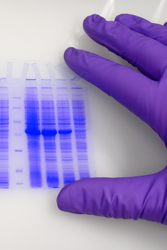Demystifying Diagnostics: A Guide to Stains and Reagents for Better Patient Care
24th Jan 2024
In the intricate world of healthcare, accurate diagnosis is the cornerstone of effective treatment. This often hinges on the silent heroes behind the scenes - stains and reagents. Used in countless laboratory tests, these tools unveil vital information about a patient's health, paving the way for personalized care and improved outcomes.
But for those unfamiliar with the inner workings of a diagnostic lab, the terms "stain" and "reagent" might sound enigmatic. So, let's delve into their significance and explore how they contribute to better patient care.
Staining: Unveiling the Cellular Landscape
Imagine a pathologist examining a tissue sample under a microscope. To the naked eye, it appears like a uniform mass. But with the magic of stains, specific structures within the cells become vividly highlighted. These stains act like highlighters for cellular components, enabling the pathologist to identify abnormalities.
There are two main types of stains:
- Hematoxylin and Eosin (H&E): This is the workhorse of pathology labs. H&E stains nuclei (blue) and cytoplasm (pink), providing a basic blueprint of the tissue.
- Special Stains: When a specific disease is suspected, specialized stains are employed. These target unique cellular features, such as fat (Sudan Black), bacteria (Gram stain), or cancer markers (immunohistochemistry).
By meticulously selecting the right stain, the pathologist gains invaluable insights into:
- Cell morphology: Healthy cells have a characteristic shape and size. Stains help detect deviations that might indicate disease.
- Cellular composition: The presence or absence of specific cell types can be crucial for diagnosis.
- Pathological processes: Stains can reveal signs of inflammation, infection, or other ongoing processes in the tissue.
Reagents: The Chemical Catalysts of Diagnosis
Beyond stains, another essential group of players in the diagnostic game are reagents. These are chemical compounds that react with specific substances in a patient's sample (blood, urine, etc.) to trigger a measurable change. This change, often a color shift or light emission, indicates the presence or absence of a target molecule.
Common examples of reagents include:
- Enzymes: These biological catalysts accelerate chemical reactions, allowing for sensitive detection of various analytes (substances being measured) in blood tests.
- Antibodies: These highly specific molecules act like microscopic matchmakers, binding only to their target antigens (disease markers) in a sample. Immunodiagnostic assays utilize antibodies to detect infections, autoimmune disorders, and even specific types of cancer.
- Indicators: These reagents change color based on the acidity (pH) of a solution, enabling the measurement of blood gases or other parameters vital for monitoring patient health.
The precision of reagents plays a critical role in:
- Accuracy of diagnosis: Highly specific reagents minimize false positives and negatives, ensuring a clear picture of a patient's condition.
- Speed of results: Certain reagents allow for rapid tests, enabling faster treatment decisions for critical illnesses.
- Monitoring treatment efficacy: By measuring changes in specific molecules over time, doctors can assess how well a patient is responding to treatment.
The Synergy of Stains and Reagents: Optimizing Patient Outcomes
The combined power of stains and reagents unlocks a treasure trove of information about a patient's health. By providing detailed visual information (stains) and precise quantitative data (reagents), these tools empower healthcare professionals to:
- Diagnose diseases accurately: Early and precise diagnosis is key to initiating timely treatment and improving the chances of a successful outcome.
- Develop personalized treatment plans: With a clearer understanding of the underlying disease, doctors can tailor treatment approaches to each patient's specific needs.
- Monitor treatment progress: Stains and reagents can be used to track a patient's response to treatment and make necessary adjustments.
- Develop new diagnostic tests: Advances in stain and reagent technology are constantly paving the way for more accurate and efficient methods of detecting diseases.
Beyond the Lab: The Ripple Effect of Accurate Diagnosis
The impact of stains and reagents extends far beyond the confines of a laboratory. Accurate diagnoses translate to:
- Improved patient outcomes: Earlier diagnoses and targeted treatments contribute to better patient survival rates and reduced morbidity.
- Reduced healthcare costs: Early intervention can prevent complications and the need for more expensive procedures later on.
- Enhanced patient well-being: Knowing their condition allows patients to make informed decisions about their healthcare and participate actively in their treatment plan.
Conclusion: The Unsung Heroes of Healthcare
While stains and reagents might not receive the same spotlight as medications or advanced medical technologies, they play a vital role in revolutionizing patient care.
Contact us today to learn more about how Cenmed can help achieve your laboratory goals. For more information, visit our chemical website - https://cenmedonline.com/chemicals/

